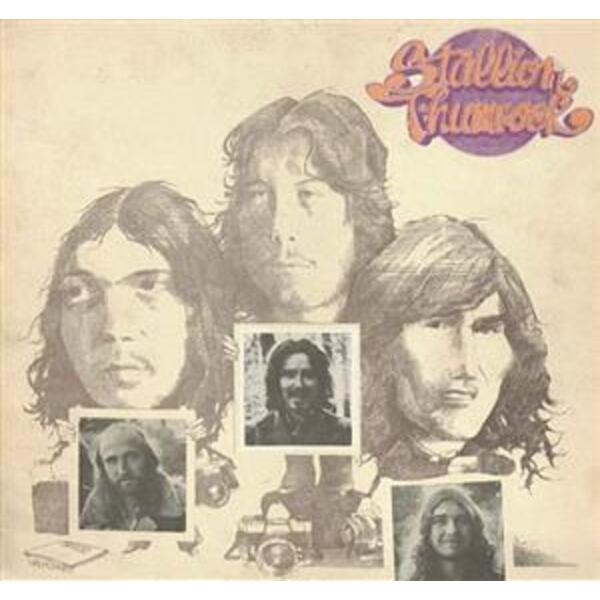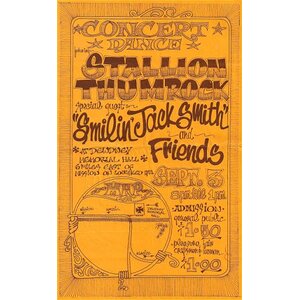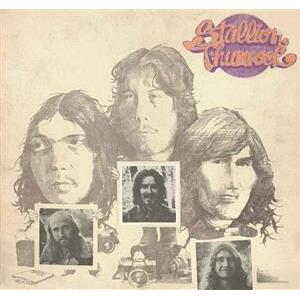Information/Write-up
Stallion Thumrock emerged from the lakeside stillness of Cultus Lake, British Columbia, in 1970, when guitarist and songwriter Brett Wade, his childhood friend Garry Bell, and keyboardist Basil Watson moved into Brett’s grandparents’ cabin to write, rehearse, and dream of building a world-class rock band far from the city’s bustle. Days were filled with woodsmoke and lake light filtering through the windows as they worked out songs before a massive stone fireplace, their harmonies echoing off the cabin walls while friends drifted in and out to listen and party. Early that summer, the trio phoned Colorado to enlist drummer and vocalist Dick Whetstone, a seasoned musician fresh from recording two albums with The Electric Prunes in Los Angeles. Within weeks, Whetstone arrived in Vancouver driving a brand-new Pontiac GTO, and with his arrival, the band’s sound crystallized—tight, melodic, and full of rhythmic confidence.
Taking their name from a wild horse and the local slang “thumb rock,” the quartet began performing around Vancouver’s vibrant club circuit—venues like Pender Auditorium, the Parlour, and Oil Can Harry’s—where their intricate harmonies and natural stage warmth earned a devoted following. They were a “musician’s band,” technically skilled yet free-spirited, equally at home in heavy, guitar-driven jams and pastoral folk passages. A 1971 Vancouver Sun review by Brian McLeod described one of their shows as “seventy-five of the happiest people in Vancouver,” praising their unpretentious musicianship and tight vocal blend.
That same year, the group packed into a battered Ford Econoline van and headed east for a whirlwind tour through Michigan and Kansas, at times billed as The Electric Prunes to capitalize on Whetstone’s connection. Upon returning to Canada, Brett’s younger brother Joel Wade joined on bass, allowing Watson to focus fully on keyboards. With five strong singers now in the lineup, Stallion Thumrock developed a lush harmonic sound unmatched in the West Coast underground. Their growing live reputation eventually caught the ear of Chilliwack and Collectors founder Claire Lawrence, who agreed to produce their debut album for Haida Records, distributed by A&M Canada.
In early 1972 the band traveled to A&M Studios in Hollywood, California, where they recorded their self-titled album in less than a week—three days to track, three to overdub and mix—amid sessions next door by Carole King, Joni Mitchell, and Stephen Stills. Despite the modest budget, the record sounded remarkably accomplished. Lawrence’s production gave the songs a balance of West Coast shimmer and Canadian grit, while engineers Tom Vicari and Rick Porter handled the mix and Bernie Grundman mastered the final tapes. The cover artwork, by future Vancouver Sun caricaturist Kerry Waghorn, captured the band’s intensity with surreal, equine imagery.
Released later that year as Stallion Thumrock (Haida HL-5102), the album revealed a striking range: the moody psychedelia of “Reptile Farm” and “Mayday,” the folk-rock grace of “Perennial As the Trees,” and the mountain-born optimism of “Going Back to the Mountains.” The interplay of Whetstone’s muscular drumming, Bell’s rhythm guitar, Watson’s Hammond organ, and Brett’s lyrical solos created a sound both rugged and refined—like the landscape that inspired them. Though the record received only limited distribution, it resonated deeply with those who heard it, and its small pressing of roughly 500 copies has since become a coveted artefact of early-’70s Canadian psych-rock.
After its release, Stallion Thumrock toured nationally, including a CBC television appearance in Montreal and theatre dates across Ontario. Yet despite critical praise and a wealth of unrecorded material, the group soon unraveled. Watson left first, followed by Whetstone’s return to Colorado, and by 1973 the project had quietly folded. Brett and Joel Wade went on to form The Wade Brothers, signing to Epic Records and continuing the sophisticated studio direction hinted at on Stallion Thumrock. Whetstone pursued photography and drumming in the U.S., while Bell and Watson remained active in regional music circles.
Today, Stallion Thumrock stands as a lost classic—an improbable meeting of cabin-born songwriting and Hollywood polish, of British Columbia’s mountain introspection and California’s studio precision. It captures a fleeting moment when young Canadian musicians dared to dream globally from the shores of a quiet lake, leaving behind one luminous record that still ripples through the water of time.
-Robert Williston
Garry Bell: rhythm guitar, vocals
Basil Watson: piano, organ, vocals
Brett Wade: lead guitar, vocals
Dick Whetstone: drums, vocals
Joel Wade: bass
Produced by Claire Lawrence
Engineered by Bernie Grundman
Mixed by Rick Porter and Tom Vicari
Cover Artwordk by Kerry Waghorn



No Comments